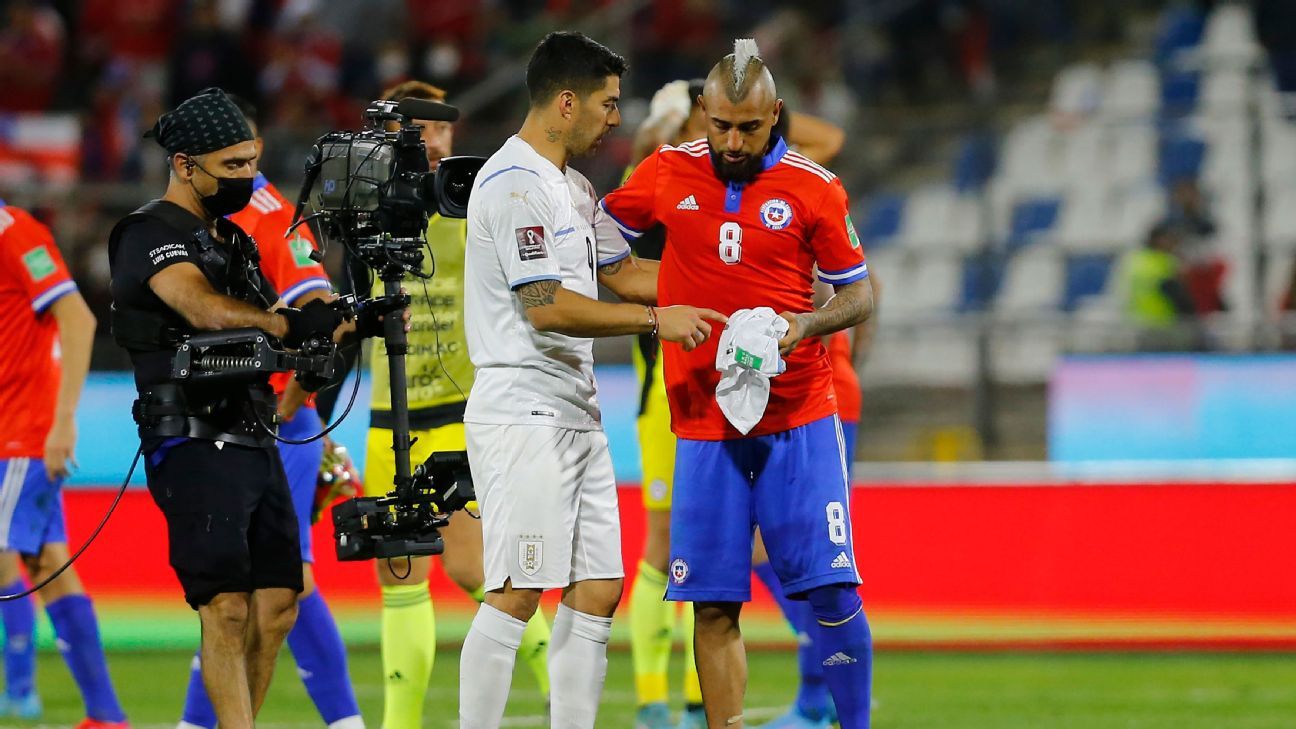
For two decades now, the Brazilian league has kicked off in April or May and gone all the way through to early December — with a slightly earlier finish this year because of the upcoming World Cup kicking off in late November. And in the middle of the action is the opening of the global transfer window, when the vast majority of business is done — and Brazil’s clubs would lose their stars.
Coaches in Brazil are still nervous. The fear remains that they might lose an important member of the side, especially if it happens right at the end of the window, when there is little time left to shop for a replacement. But times have changed. The mid-year transfer window — has become a net gain for the Brazilian league.
– Vickery: The motivation behind Gabriel Jesus’ Arsenal move
– Don’t have ESPN? Get instant access
This year, for example, Flamengo are bringing in winger Everton Soares, the hero of Brazil’s 2019 Copa America win, and are on the verge of officially signing legendary Chilean midfielder Arturo Vidal. This is an excellent illustration of two of the types of player making their way to Brazil. Veteran South Americans — not necessarily Brazilian — who are looking to wind down their careers back in their home continent after long and successful spells in Europe. And Brazilians in their mid-20s who have been unable to settle in Europe. Vidal, from Internazionale, comes into the first category and Everton, from Benfica, the second.
1 Related
Domestic double winners Atletico Mineiro have also gone shopping. In from France comes centre-back Jemerson, who was in contention for the last World Cup. Striker Alan Kardec has been brought in from China, as well as Argentina winger Cristian Pavon. Copa Libertadores champions Palmeiras have also gone to Argentina, bringing in strikers Miguel Merentiel and Jose Manuel Lopez.
This is all bankrolled by extra business know-how, as the Brazilian clubs learn more about leveraging their huge support base. And with clubs opening up to new form of ownership, including foreign capital, their purchasing power is likely to increase.
And another change in the market is also making the league stronger. A few years ago — when Brazil embarked on the May-December format, for example, the European clubs came in for the biggest stars in Brazil. That is no longer the case. They are no longer particularly interested in the best players. They want the best prospects, the younger the better. The thinking here is that the earlier they can get youngsters across the Atlantic, the easier it will be to help them adapt to life and to football in Europe.
There is a belief that over the last 15 years a chasm has opened up, that top class European football is much quicker and more compact than in South America, with less time on the ball. An early adaptation is best. There are risks — perhaps more for the human being than the footballer. The 18-22 age can be a difficult one. It is not always easy to go through the changes of late adolescence at home, let alone thousands of miles away in a different culture. But if the move does not work out, the player can always be transferred on — back to Brazil, for example.
In recent times Flamengo are the best example of this trend, developing Vinicius Junior (Real Madrid), Lucas Paqueta (Lyon) and Reiner (Borussia Dortmund via Real Madrid) and using the proceeds to finance a squad of depth, quality and experience.
And Brazilian football now reigns supreme in South America. Both the last two finals of the Copa Libertadores have been all-Brazilian affairs, and this year Brazil supplies five of the last eight — as well as half the quarterfinalists in the Copa Sudamericana.
That is not to say that Brazil can attract whoever it wants and that all the problems of its domestic football have been solved. Far from it — and Luis Suarez may serve as an interesting example.
The veteran Uruguay striker is without a club after his contract at Atletico Madrid expired. It appears that he was mildly interested in joining River Plate of Argentina. But this, it seems, was conditional on their making it through to the last eight of the Libertadores. They fell short last week, and the interest from Suarez cooled. The ex-Liverpool and Barcelona man also admitted earlier this week that he has received “five or six” offers from teams in Major League Soccer.
What about teams from Brazil? The word from the Suarez camp was that he was not interested. There are a number of possible explanations for this stance. The life of a footballer in Brazil can be an arduous one. Fans are quick to turn on their own team — not just with words, but with the threat (and increasingly the reality) of violence. Games can take place in gruelling high temperatures. There is lots of travelling — the country is huge. And there are too many games. The question of an organised calendar has never been properly addressed, and the players pay the price.
For a veteran looking to keep himself sharp in the build up to the World Cup, a move to Brazil represents a risk. The mid-year transfer window has become a net gain for Brazilian football, but overall continues to operate below its potential.


